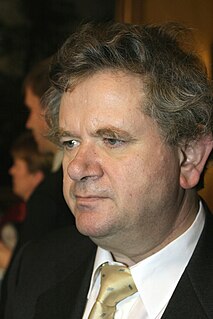Parliamentary elections were held in Montenegro on 20 October 2002. The result was a victory for the For a European Montenegro alliance formed by the Democratic Party of Socialists of Montenegro and the Social Democratic Party of Montenegro, which won 39 of the 75 seats. It was the last parliamentary election held in Montenegro prior to independence in 2006.

Parliamentary elections were held in Iceland on 8 April 1995. They were the first elections after the Althing became a unicameral parliament in 1991. The Independence Party remained the largest party, winning 25 of the 63 seats.

Parliamentary elections were held in Iceland on 8 May 1999. The Independence Party remained the largest party in the Althing, winning 26 of the 63 seats.
The Russian Party in Estonia was a minor political party in Estonia.

Parliamentary elections were held in Iceland on 23 and 24 October 1949. The Independence Party remained the largest party in the Lower House of the Althing, winning 13 of the 35 seats.

Parliamentary elections were held in Iceland on 28 June 1953. The Independence Party remained the largest party in the Lower House of the Althing, winning 14 of the 35 seats.

Parliamentary elections were held in Iceland on 24 June 1956. The Independence Party remained the largest party in the Lower House of the Althing, winning 13 of the 35 seats.

Parliamentary elections were held in Iceland on 28 June 1959. The Independence Party and the Progressive Party both won 13 seats in the Lower House of the Althing. Following the tie, electoral reforms were introduced and early elections were held in October.

Early parliamentary elections were held in Iceland on 25 and 26 October 1959. Following the electoral reforms made after the June elections, the Independence Party won 16 of the 40 seats in the Lower House of the Althing.

Parliamentary elections were held in Iceland on 11 June 1967. The Independence Party remained the largest party in the Lower House of the Althing, winning 15 of the 40 seats.

Parliamentary elections were held in Iceland on 13 June 1971. The Independence Party remained the largest party in the Lower House of the Althing, winning 15 of the 40 seats.

Parliamentary elections were held in Iceland on 30 June 1974. The Independence Party remained the largest party in the Lower House of the Althing, winning 17 of the 40 seats.

Parliamentary elections were held in Iceland on 25 June 1978. The Independence Party remained the largest party in the Lower House of the Althing, winning 14 of the 40 seats. Following the election a coalition was formed between the People's Alliance, Social Democratic Party and the Progressive Party with Ólafur Jóhannesson as Prime Minister.

Parliamentary elections were held in Iceland on 2 and 3 December 1979. The Independence Party remained the largest party in the Lower House of the Althing, winning 14 of the 40 seats.

Parliamentary elections were held in Iceland on 25 April 1987. The Independence Party remained the largest party in the Lower House of the Althing, winning 12 of the 42 seats.

Parliamentary elections were held in Hungary between 31 March and 7 April 1935. The result was a victory for the Party of National Unity, which won 164 of the 245 seats in Parliament. Gyula Gömbös remained Prime Minister.

Parliamentary elections were held in Iceland on 5 July 1942. Although the Independence Party won a plurality of votes, the Progressive Party remained as the largest party in the Lower House of the Althing, winning 14 of the 33 seats.

Early parliamentary elections were held in Iceland on 18 and 19 October 1942. They were held after reforms were made to the electoral system following the July elections. The Independence Party emerged as the largest party in the Lower House of the Althing, winning 13 of the 35 seats.
The German-Baltic Party was a political party in Estonia representing the German minority.
The Party of Independence and '48, also known mostly by its shortened form Independence Party, was one of the two major political parties in the Kingdom of Hungary within Austria-Hungary, along with the Liberal Party then National Party of Work. During its existence, the F48P strongly opposed the Austro-Hungarian Compromise of 1867. The party was revived after the fall of the Hungarian Soviet Republic and restoration of the monarchy.






